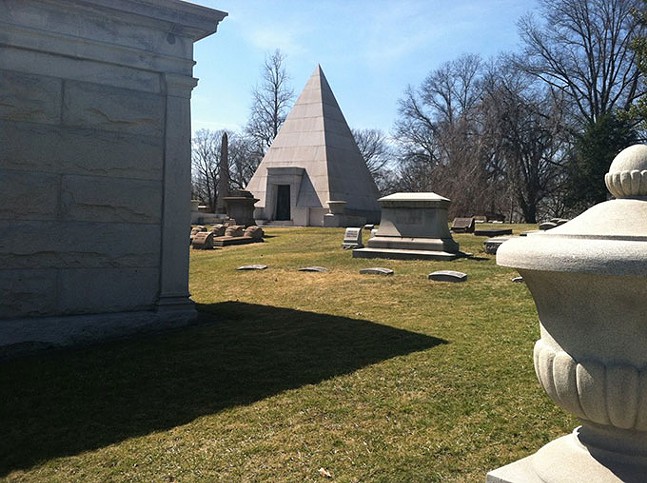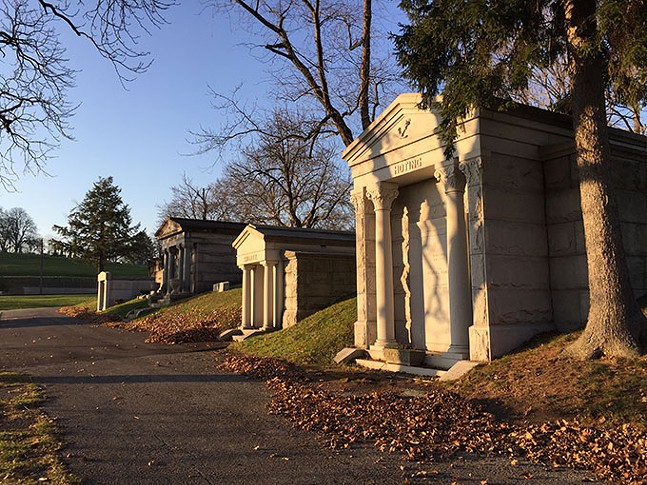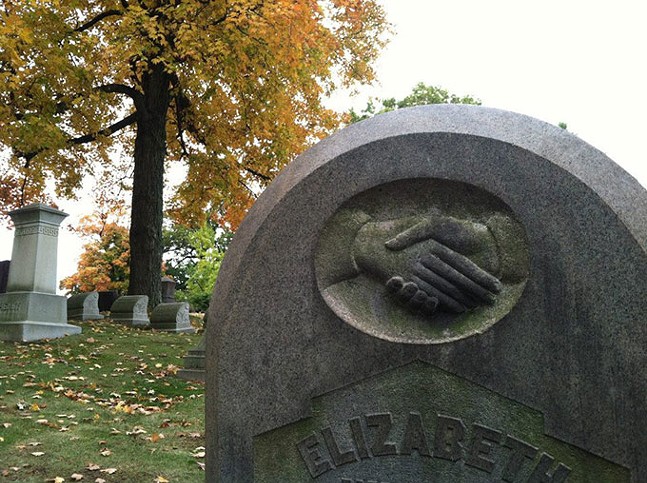The more obscure history of the Homewood Cemetery would have stayed largely unknown if not for the advent of digitization. While the site boasts many notable resting places, including jazz musician Erroll Garner, photographer Charles "Teenie" Harris, and industrialists Andrew Mellon and Henry Clay Frick, it wasn’t until Newspapers.com and other online resources that a wealth of new information opened up.
“People know about the famous people who are there … but not everyone was a millionaire, and not everyone was a famous baseball player or a jazz prodigy,” says Jennie Benford, director of programming for the Homewood Cemetery Historical Fund, the nonprofit dedicated to preserving and educating the public about the site’s history, landscape, and architecture.
If not for these developments, the Fund might never have learned about the meteorite that hit the cemetery or the unmarked grave of a faith healer who patented a flying machine in 1904.
“The types of stories that we are able to find now are letting us be stewards of other types of stories,” says Benford. “We have always done a very good job of interpreting people we know about, but now we get to find people and find out about them and bring their stories into that tradition.”
Some of that history will take center stage – literally – at the upcoming 79,000 Stories: Founders' Day event on Sat. Aug. 17. The celebration honors the 79,000 people buried in the cemetery, including Pittsburgh Symphony Orchestra founder and conductor Frederic Archer, and Blanche McDonald, a palm-reading Spanish countess. Their stories will be told through two world premiere performances, a puppet show for Archer and a musical for McDonald.
Benford, a professional archivist who worked for Carnegie Mellon University before her role at the cemetery, believes that not being able to access as much information led to the cemetery’s history becoming “lopsided,” as knowledge was usually limited to its most rich and famous inhabitants. Now, it’s expanded into a more representative view of those buried.
“The playing field of class and gender and, in a lot of cases, race, has been leveled in a lot of ways with this new way of researching,” says Benford.
This extends to some of the cemetery’s regular programming, including Audacious Pioneers, a walking tour covering the notable women of Section 14. They include Elizabeth Pitcairn, the wife of railroad executive, Robert Pitcairn, whom Benford says used her means to support the women's suffrage movement.
“We thought it would be interesting to take the men out of the picture and focus on the women and see what stories we could find,” says Benford, adding that what they found was “very rich” and “crossed a lot of boundaries.”
With new information at their disposal, Benford says they hope to launch more tours that use the cemetery to cover subjects such as African-American history before 1920 and social justice figures. “As we find these stories, we start seeing themes, people we can put together.”
Besides the historical element, the Founders’ Day event and other programming serve as a sort of outreach to show the public the more civic aspects of the cemetery as an arboretum, and as a place for respite and recreation. She points to how old, historic cemeteries like Homewood, which was established in 1878, were originally intended to serve as urban green spaces long before city parks were established.
“That is really what our landscape was designed for,” says Benford, adding that the mission seemed to have gotten lost in translation as our relationship with death changed over time, as diseases were cured and people began to live longer. “We just have to make sure that aspect of what we do doesn’t interfere with the real mission, which is providing a respectful burial place.”
Benford says that if people respect the rules of the cemetery and its inhabitants, they’re free to roam the grounds.
“As long as the gates are open, they’re welcome.”


















